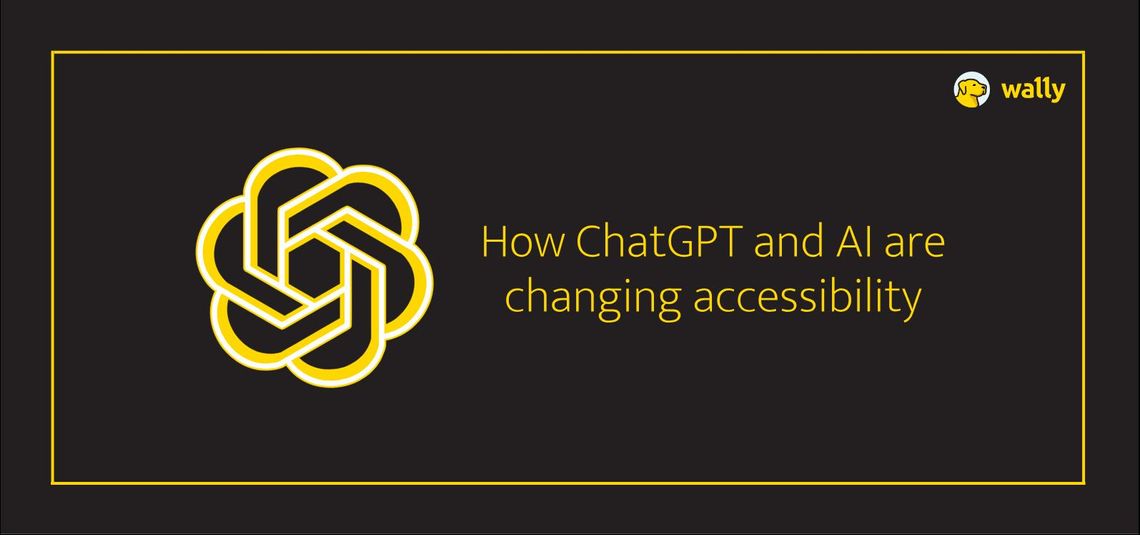How ChatGPT and AI are changing accessibility
How ChatGPT and AI are changing accessibility

Artificial intelligence (AI) is playing a pivotal role in reshaping various aspects of our lives. One of the most profound impacts of AI is its ability to enhance accessibility for individuals with disabilities. In this blog, we will explore how ChatGPT and AI are changing web accessibility across different domains.
1. Communication Augmentation
For individuals with speech or communication disabilities, ChatGPT and other AI-powered tools are a game-changer. These tools can convert text input into natural-sounding speech, allowing people who require accessibility support to communicate effectively. Moreover, they can translate sign language into text or speech, making it easier for the deaf and hard of hearing to interact with others who may not understand sign language. This level of communication augmentation empowers individuals with special abilities to participate in conversations, express themselves, and engage in social interactions more freely.
2. Text-to-Speech and Speech-to-Text
ChatGPT's text-to-speech and speech-to-text capabilities are invaluable for individuals with visual or hearing impairments. Text-to-speech technology converts written content into spoken words, making digital information accessible to those who are blind or have low vision. Conversely, speech-to-text technology transcribes spoken words into text, enabling individuals with hearing impairments to read and understand spoken content. These AI-driven features are integrated into various assistive technology devices and applications, making everyday tasks like reading emails, books, and web articles more accessible, further aiding assistive listening devices.
3. Content Accessibility
AI is now helping organizations improve the accessibility of their digital content. They can automatically generate alternative text for images, ensuring that individuals with visual impairments can understand the content of images and graphics on websites or in documents. Additionally, AI can help identify and rectify accessibility issues in digital content, making websites, apps, and documents compliant with accessibility standards such as the Web Content Accessibility Guidelines (WCAG). This not only enhances the user experience for people with special abilities but also helps organizations meet legal requirements and tap into a broader audience.
4. Assistive Technology Integration
ChatGPT can seamlessly integrate with various assistive technologies, such as screen readers, braille displays, and eye-tracking devices. This integration provides a more comprehensive and accessible user experience for individuals with disabilities. For example, someone who is blind can use a screen reader in conjunction with ChatGPT to navigate websites, access information, and engage in online conversations. This synergy between AI and assistive technologies is expanding the possibilities for people with disabilities in education, employment, and everyday life.
5. Accessible Education
AI is revolutionizing education by making it more inclusive. ChatGPT can serve as a virtual tutor, providing personalized assistance to students with various learning disabilities. It can adapt content to meet individual needs, offer explanations in multiple ways, and provide real-time feedback. Moreover, ChatGPT can convert textbooks and educational materials into accessible formats, ensuring that students with disabilities have equal access to educational resources. As a result, AI is breaking down barriers to education and empowering students to reach their full potential.
Conclusion
The integration of ChatGPT and AI into various aspects of our lives is significantly improving accessibility for individuals with disabilities. As AI technology continues to advance, we can expect even more innovative solutions that will further enhance accessibility and promote inclusivity for all. The future is undoubtedly bright for a world where technology is a powerful force for accessibility and equality.




